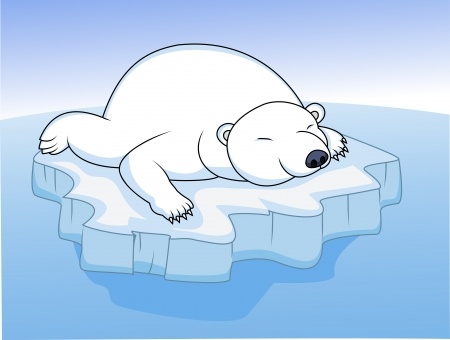Animals in the arctic have so many adaptations, but why don’t they freeze? Many of them have developed a special “blubber mitt” that you can recreate with your class.
Do your students think that polar bears have blubber? They don’t! Kids are often surprised by the unique adaptations cold weather animals have.
Animals who live in freezing temperatures have adapted over time to tolerate their cold climates. These animals have developed a thick layer of fat called blubber, which insulates their bodies from the cold.
lubber is primarily found in marine mammals such as seals, whales, and walruses that inhabit the Polar Regions. But how does it work?
Unlike fat found in other animals, blubber is vascularized, which means that it carries blood throughout. Blood vessels in the blubber constrict to minimize blood flow to the skin, thus keeping heat closer to the animal’s core.
Do Polar Bears Have Blubber?
In addition to providing insulation, blubber serves as an energy source that animals use when food is scarce.
Blubber also helps to conserve energy by providing buoyancy and streamlining the body for more efficient movement through the water.
Here’s how to recreate this unique animal adaptation in your classroom!
The Blubber Mitt
Begin the science lesson by engaging the students in a discussion about how they stay warm on cold days. They recount wearing sweaters, coats, gloves, etc. Then ask how they think animals stay warm in cold climates.
I show the students pictures of animals in the Arctic that use blubber for protection (whales, walruses, penguins, etc.) and I ask the students what they notice. The response is usually the same: “Those animals are fat!” I then introduce the vocabulary word “blubber” and pose the question, “Why do animals need blubber?”
- The students record their hypotheses in their science journals. While the students are doing this, I dump the ice into the plastic container and fill it halfway with water.
- Next I show them the ice water and ask them to predict how it will feel. The students then get to see the “blubber mitt” and we talk about how it represents the layer of fat that some animals have.
- Now it’s time to gross them out: put your hand in it (be sure to be descriptive of how it feels) and ask them to predict how the ice water will feel with the blubber mitt on.
Each table group now gets to experience the difference for themselves. This goes pretty quickly since each student only gets three seconds to put their hands in the water.
They put one hand in the mitt and then dunk both hands (one is bare) into the ice water. Then they go back to discuss the results with their table group while I call other groups.
After each student has a chance to feel the icy water with and without the blubber mitt, we record the temperature of each. I put one thermometer in the blubber mitt and one in the ice water.
The students record the temperatures in their science journal and we calculate the difference. The students draw conclusions from the data, discuss their findings, and record their conclusions in their science journals.
Extension
Students can use books or the internet to research Arctic animals (and in the Antarctic) that use blubber as an adaptation to protect themselves from the cold. The class could then identify where these animals live and locate their homes on maps to incorporate social studies.
They can also choose an animal to write about and their reports can be compiled into a class book.
To incorporate math, students can select a cold place where their animal lives and use internet resources such as Weather.com to chart the temperature in that location over time.
